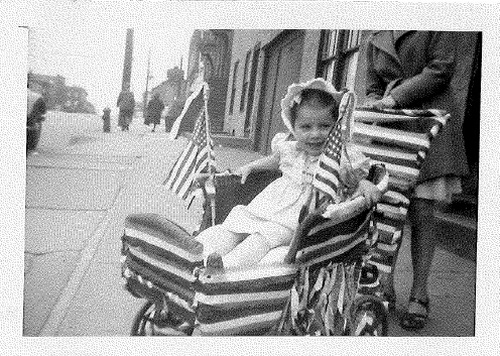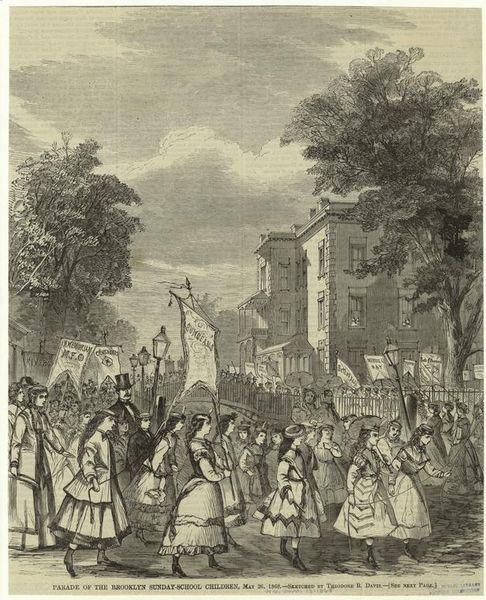Few of us realize why the first Thursday in June –“Brooklyn-Queens Day”– is a holiday for the public school children of New York City. It was not always the case. Between 1959 and 2006, for instance, only children from Brooklyn and Queens enjoyed the day off. And prior to 1959, the holiday was celebrated exclusively in Brooklyn. But the reason for the holiday goes back much farther than the mid twentieth century…
Fondly remembered as “Anniversary Day” by some older Brooklynites, the holiday was originally organized in May as the anniversary of the founding of the Brooklyn Sunday School Union in 1810. It was shortly after the Civil War that a bill was drafted declaring “Anniversary Day” an official school holiday in Brooklyn.
The anniversary was first celebrated with a parade of Sunday school scholars in 1829. In 1861, 23,000 children marched in separate contingents from Eastern and Western Brooklyn toward City Hall and then Fort Greene. The Western Parade Marshall was identified as “Mr. Douglass” and is thought to have been abolitionist Frederick Douglass. Over time, the tradition was for City Hall (now Borough Hall) to ring its bell at 11 am to start the celebration, answered by church bells all over Brooklyn.
Over the years, Prospect Park served as a main rallying spot for the marchers where the children converged on the parks singing hymns such as “Onward Christian Soldiers” and “A Mighty Fortress is Our God” to the accompaniment of marching bands behind the banners of their respective churches. The display was quite startling (see picture here). In the twentieth century, the marchers wore paper sashes of white and blue with a slightly different theme each year. Many churches had floats – one memorable one represented a Dutch Reformed Church and carried children dressed in Dutch costumes with a small windmill. Baby carriages (pre-stroller era) were decorated with bunting and ribbons – and maypoles were erected in Prospect Park where participants would dance around them. Indeed, the event was serious enough to require a reviewing stand with Mayors, Governors and members of the clergy. In 1946 Governor Dewy and Mayor O’Dwyer were stationed at the reviewing stand. And in 1960 it was Governor Rockefeller who took his seat there. This august tradition continued until some time in the 1960’s, when it probably petered out due to a lack of children attending Sunday Schools and the desire to secularize the holiday. To be sure, a day off still has its merits. And the expansion and secularization of the holiday is laudably more democratic. But to some who remember the parades (like the author pictured here in 1947), the day has lost it some of its festive air of an exciting neighborhood display.
—Ruth Edebohls
Ruth Edebohls is the Coordinator of Urban Tours at the Center for the Urban Environment. To learn more about the Center visit us at www.bcue.org.



1 response so far ↓
1 Brenda from Flatbush // Jun 24, 2008 at 3:47 am
Great bit of history, and an amazing reminder of how central and unquestioned the role of religion once was in the public square (literally and figuratively)!